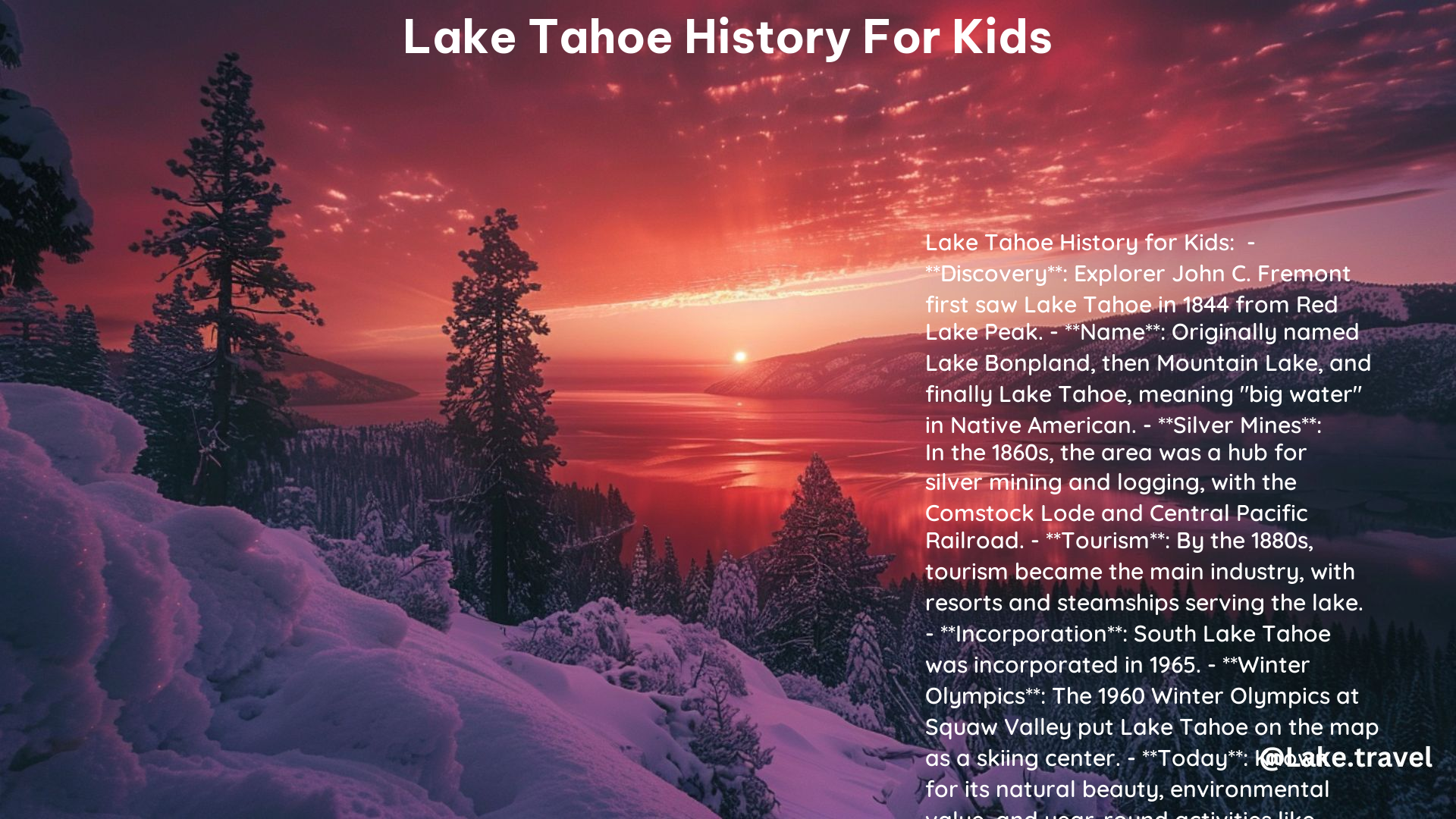Lake Tahoe is a breathtaking natural wonder that has captivated people for centuries. As one of the largest and deepest alpine lakes in North America, it boasts a rich and fascinating history that is sure to captivate young minds. In this blog post, we’ll dive into the intriguing story of Lake Tahoe, exploring its origins, the indigenous people who called it home, and the evolution of this iconic destination.
The Naming of Lake Tahoe
The name “Lake Tahoe” has an interesting history of its own. When explorer John C. Fremont first laid eyes on the lake in 1844, he named it “Lake Bonpland” after a botanist. Over time, the lake was known by various other names, including “Mountain Lake” and “Lake Bigler,” before the California State Legislature officially designated it as “Lake Tahoe” in 1945. The name “Tahoe” is derived from the Washoe Native American language, meaning “big water.”
The Washoe Tribe and Their Connection to Lake Tahoe

The Washoe Tribe has a deep and enduring connection to Lake Tahoe, which they called “Da ow a ga” or “edge of the lake.” For centuries, the Washoe people lived in harmony with the land, using the lake’s resources for food, shelter, and spiritual practices. They were skilled hunters and gatherers, and the lake played a vital role in their way of life.
The Washoe people believed that Lake Tahoe was a sacred and spiritual place, and they had a profound respect for the natural environment. They used the lake for ceremonies, rituals, and healing, and they passed down their traditions and stories from generation to generation.
Early Settlement and the Rise of Tourism
In the 1860s, Lake Tahoe became a hub of commercial activity, with the silver mines in Virginia City and the construction of the Central Pacific Railroad driving growth in the region. The area was extensively logged to provide wood for the mines and the railroad, which had a significant impact on the local environment.
As the 20th century approached, Lake Tahoe began to emerge as a popular tourist destination. Resorts and hotels sprang up around the lake, catering to visitors who were drawn to the area’s natural beauty and outdoor recreation opportunities. Today, Lake Tahoe is a year-round destination, offering a wide range of activities, from skiing and snowboarding in the winter to boating, hiking, and swimming in the summer.
Fascinating Facts About Lake Tahoe
- Lake Tahoe is the largest freshwater lake in the Sierra Nevada and the largest alpine lake in North America.
- The lake was formed approximately 25 million years ago through a combination of faulting, volcanism, and glaciation.
- Lake Tahoe receives an average of 420 inches of snow per year and enjoys sunshine for about 274 days annually.
- The lake’s crystal-clear waters are renowned for their stunning blue hue, which is the result of the lake’s depth and the way sunlight interacts with the water.
- Lake Tahoe is home to a diverse array of wildlife, including the Lahontan cutthroat trout, a species that was once on the brink of extinction but has since been reintroduced to the lake.
Conclusion
Lake Tahoe’s history is a captivating blend of natural wonders, indigenous culture, and the evolution of human settlement and tourism. From its ancient geological origins to the present-day, this iconic lake has captured the imagination of people around the world. By exploring the rich history of Lake Tahoe, kids can gain a deeper appreciation for the natural world and the enduring legacy of the Washoe Tribe, who have called this place home for centuries.
Reference:
– Lake Tahoe History
– Washoe Tribe and Lake Tahoe
– Lake Tahoe Tourism History
